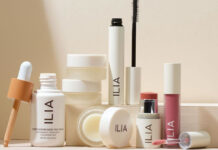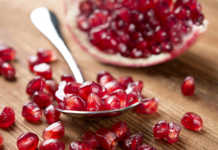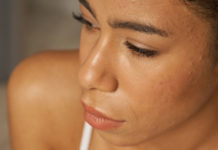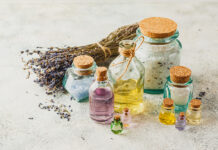
The secret to beauty rests with nutrition
By Julie Mancuso
Much is written on what women can do to mask common beauty concerns, but most of these ways are superficial. Because beauty starts from within, cosmetics should augment and accentuate features, not cover up evident health problems and deficiencies. A woman’s diet plays a vital role in her health, and this includes her beauty. The formula is simple: to bring about beauty more naturally, certain foods should be avoided, while others should be eaten more frequently.
Seeking nutrition and wellness advice, many of my female clients appear mystified by the impact food selection has on beauty. The impact, however, cannot be denied.
Before applying topical treatments or turning to more invasive methods to achieve beauty, women should consider taking a closer look at their food selection as the first course of action in dealing with these beauty problems:
Cellulite
Colloquially known as ‘cottage-cheese,’ cellulite afflicts women no matter what age, weight, and body composition. According to health.com, “cellulite occurs when underlying fat deposits begin to push through layers of collagen fibers, or connective tissue, under the skin.”
To curb cellulite from a nutritional standpoint, here’s a four-pronged approach:
One, the intake of salt needs reducing. Reason being, salt causes water retention, making the cellulite more visible. Canned foods, processed meats, pickles, potato chips, many condiments, take-out food, and appropriately enough, cottage cheese, should be consumed in limited amounts.
Two, drinking water helps to keep that connective tissue strong and flexible, acting as a barrier against the fat eagerly waiting to peer through. Water intake can be supplemented with more plant-based, high-water-content vegetables, including, cucumber, eggplant, zucchini, celery and lettuce.
Three, sugar requires a significant cutback. Sugar has been shown to reduce collagen production—the substance that makes the skin stretchy. This is particularly important for women as they age. As time passes and estrogen starts to decrease, circulation drops. As this happens, women get less oxygen delivery to their body parts, effectively inhibiting the collagen production. Fat cells become larger and begin poking out through the collagen in the form of lumpy, bumpy skin.
Lastly, stocking up on collagen-rich, vitamin C abundant, antioxidative foods will help to combat cellulite. Gobbling up bone broth, feasting on some leafy greens regularly, introducing lycopene-rich beets and tomatoes, and reaping the antioxidative benefits of the berry family can all help to send cellulite packing.
Acne
Acne doesn’t just handicap teenage girls. Women well into midlife can be stricken with this undesirable condition. Before making a beeline for the acne cream shelf at the nearest drugstore, specific food changes should be considered.
It all starts with eating fewer high-glycemic-index foods. Upon the ingestion of high GI food, the body produces insulin, according to Harvard Health. Recent studies suggest that insulin can play a part in acne breakouts because it results in the creation of cells that clog pores. When the pores are clogged, the oil has nowhere to go, causing an infection or a pimple.
To combat the acne scourge, it’s important to refrain from eating high-glycemic index foods such as pastries, white potatoes, white rice, cakes, candy, sweet drinks and many cereals. In their stead, foods with a low GI index should be eaten. This includes, but is not limited to, darker grains and breads, sweet potatoes, legumes, vegetables without starch, and other lower-sugar content foods.
The second step requires holding back on dairy consumption. Dairy contains components related to the hormone testosterone that may stimulate oil glands in the skin, producing sebum. The oily skin in tandem with the bacteria can make acne worse.
Wrinkles
It’s common knowledge that old age and genetics play a large role in the appearance of wrinkles. Sun exposure and the accompanying UV radiation do as well. What about nutrition—can something be done to keep wrinkles in check?
In short, yes. Supplying the body with nourishing food can prevent wrinkles from setting in prematurely.
First, the importance of sipping on water regularly throughout the day, while abstaining from liquids that tend to dehydrate (read: alcohol and coffee) cannot be glossed over. Sodium intake should be limited for the same reason. An adequate water supply can help support skin elasticity—amongst its many benefits—while preventing a reach for that sugar-laden soda.
The second step calls for eating fewer inflammatory foods because they can set the stage for all sorts of conditions, including wrinkles. This means cutting down on refined carbs, sugary foods, dairy, processed meats, trans fats and gluten, as the most immediate measure. A complete elimination isn’t necessary, but a considerable reduction is in order if beauty is on the mind.
Instead, anti-inflammatory, antioxidative, and skin-friendly foods should be eaten regularly. Tomatoes, berries, nuts and seeds, fish or fish oil, avocados, green and leafy vegetables and turmeric act as potent wrinkle-fighters.
Dark circles and bags under eyes
Dark circles and bags under the eyes are the bane of a woman’s facial beauty. Women can spend a bagful of cash trying to cover up this eyesore. But before setting out to Sephora to look for a quick cure-all, consider tackling the problem with nutrition.
Fatigue, the usual cause of the dark, puffy under-eyes, requires sleep. A more restful sleep can be achieved by eating foods that induce shut-eye. Bananas, abundant in potassium and magnesium, relax the muscles. Couple this with the tryptophan that’s found in bananas, and the bed is made for a restful sleep.
Chamomile tea performs a similar task. Acting as a mild sedative, chamomile can surely help. Ragweed allergy sufferers beware: the chamomile plant is a close cousin of ragweed and should be avoided.
The next course of action is to eliminate allergenic foods (milk, sulfites, soy, tree nuts, gluten, etc.) which may contribute to the dark eye bags and circles. The condition does improve in some people after the removal of these allergens.
Iron deficiency can also play a part because it impedes oxygen supply, manifesting itself in dark bluish puffiness. Turn to poultry, beans, lentils and spinach for an iron boost.
Excessive alcohol and salt consumption can be the culprits here, too, because they dehydrate, pulling the water out of the skin.
On the other hand, adding foods rich in vitamin K—broccoli, kale, Brussels sprouts and cabbage—can prove beneficial. These skin wonder-foods have been shown to help circulation, delivering more oxygen to the mentioned area, alleviating the ghastly under-eye.
When women become stricken with any one of these conditions, it’s their bodies likely tapping them on the shoulder, indicating that something’s just not right inside. Sure, these can be covered up by some quick-fix beauty product, seemingly giving the appearance that all is well. But to truly put an end to these deficiencies, and to bring about beauty more naturally—from within—the body needs some tender loving nutrition











